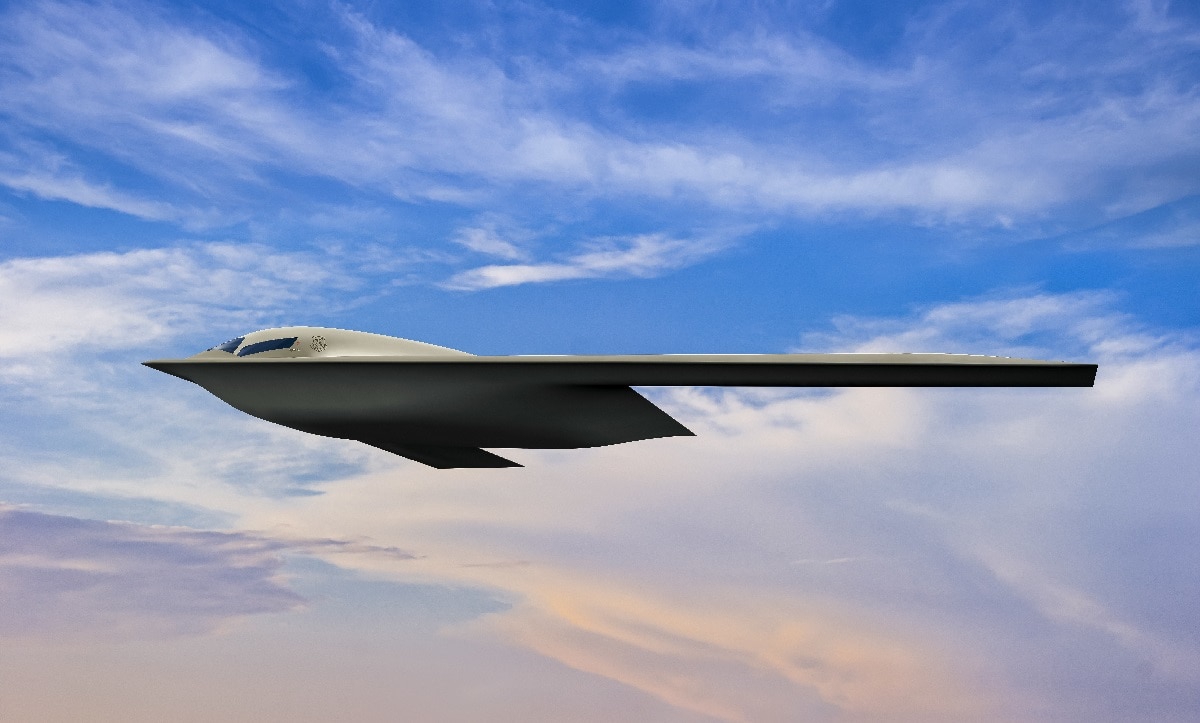We Know This Much About the B-21: Some of the Support Bases for the Plane Have Been Picked. Expert Peter Suciu Has Answers: There is an old saying, “don’t put the cart before the horse,” which advises one not to make plans until you are confident everything will come together. However, for the military, it is often required to think about future facilities well before the arrival of new hardware.
Such is certainly the case for the Northrop B-21 Raider, which is inching ever closer to entering service.
Though the aircraft has yet to make its maiden flight, which is likely to occur next year, some facilities that will be used to support the aircraft are already being constructed at Ellsworth Air Force Base (AFB), South Dakota. The current timeline calls for the first facilities to be ready by 2024, well ahead of when the future bombers could be deployed to the base.
Ellsworth is currently home to the B-1B Lancer long-range bomber.
B-21 Raider “Schoolhouse”
It was last year that the United States Air Force announced that Ellsworth was selected to be the initial B-21 operating base and formal training unit – thus the “schoolhouse” for the bomber. According to the justifications (“J-Books”) from the service’s fiscal year 2023 (FY23) budget, three military construction projects are now underway, with a collective cost of $328 million.
These will include a two-bay Low Observables (LO) Restoration Facility, a Weapons Generation Facility, and a Radio Frequency Facility. The LO building, which is set to be finished by September 2024, will be climate-controlled, while it will reportedly also be equipped with filtration gear to support spray-on stealth treatments. The 95,000-square foot LO will have specialized equipment to ensure that the B-21s are sustained and maintained, even throughout the cold South Dakota winters.
The weapons build, where bombs and missiles will be assembled and readied to be loaded onto the aircraft, will be completed by February 2026. The completion date for the radio facility, which will eventually be used to test the B-21’s stealth capabilities prior to flight operations, is now pending, but it will likely be operational by the time the first Raiders arrive by the end of the decade.
The Sky Raiders
Currently, there are at least six B-21s in various stages of construction, and the first of the Raiders – named to honor the members of the World War II “Doolittle Raiders” that conducted the first air attack on Japan – is now undergoing calibration tests. The aircraft will soon be moved outside Northrop Grumman’s Palmdale, California production plant for engine runs and taxi tests prior to its maiden flight.

Image: U.S. Air Force
Earlier this month, it was announced that the bomber will be officially unveiled to the public before that initial flight, which is scheduled for 2023. The curtain could be pulled back sometime this fall.
Already, some lawmakers have been given a “sneak peek” of the Raider.
“I recently had the opportunity to visit the production facility for the B-21 Raider bomber. While much of the information I received on my visit is classified, I am pleased to report the B-21 is on time and on budget. The public can expect the B-21 to be revealed later this year,” tweeted U.S. Sen. Mike Rounds (R-S.D.), who took part in a classified visit to Northrop Grumman’s facilities last month.
He went on to say that the bomber is one of the most advanced to be developed and that it will likely play a crucial role in the national defense.
I recently had the opportunity to visit the production facility for the B-21 Raider bomber. While much of the information I received on my visit is classified, I am pleased to report the B-21 is on time and on budget. The public can expect the B-21 to be revealed later this year.
— Senator Mike Rounds (@SenatorRounds) July 19, 2022
B-21: A Potential Strike Force
The B-21 Raider was developed as part of the Air Force’s Long Range Strategic Bomber program. It is intended to replace the late Cold War era B-1 and B-2 Spirit bombers and will operate alongside the even older B-52H Stratofortress, which will likely remain in service until at least the 2040s or early 2050s.
The Pentagon has announced plans to acquire at least 100 B-21 Raiders, but senior Air Force leaders have said that number could be increased to 145 or more.
“We are the only ally in the free world that has bombers,” Gen. Anthony Cotton, Air Force Global Strike Commander, told the Air Force Times, noting that the B-21 will continue to serve in such a capacity.

Construction of a B-21 Raider Environmental Protection Shelter prototype is completed at Ellsworth Air Force Base, S.D., Feb. 26, 2021. Ellsworth AFB was selected as the test site for the B-21 EPS as it provides the most extreme and diverse weather conditions to test the temporary structures. The testing for the EPS prototypes at Ellsworth AFB does not interfere with Air Force compliance to the National Environmental Protection Act/Environmental Impact Statement preparation for the first B-21 Main Operating Base. (U.S. Air Force photo by Airman First Class Quentin Marx)
Republican Congressman Dusty Johnson, representing South Dakota’s at-large congressional district since 2019, stated that the B-21 would take on an essential part of this nation’s deterrence force.
“China and Russia have the capacity to strike us almost anywhere in the world, almost anytime they want,” Johnson said. “It is important that we have deterrence. It’s important that we have platforms like the B-21 that can project American force across the globe at a moment’s notice.”
Expert Biography: A Senior Editor for 1945, Peter Suciu is a Michigan-based writer who has contributed to more than four dozen magazines, newspapers, and websites with over 3,000 published pieces over a twenty-year career in journalism. He regularly writes about military hardware, firearms history, cybersecurity, and international affairs. Peter is also a Contributing Writer for Forbes. You can follow him on Twitter: @PeterSuciu.

